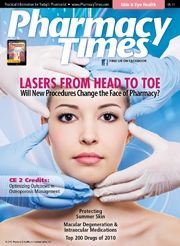Publication
Article
Pharmacy Times
Teens Not Cautioned on the Dangers of Tanning Beds
A significant percentage of adolescents and young women are not being warned about the skin cancer dangers of indoor tanning beds by tanning salon employees, according to research conducted by the American Academy of Dermatology (AAD).
The survey found that 43% of tanning bed users have never been cautioned by the salon staff about the dangers of tanning beds. When asked if they were aware of any warning labels on tanning beds, 30% of indoor tanners said “no”.
“Studies have found that UV radiation from indoor tanning beds increases a person’s risk of developing melanoma by 75%,” said Ronald L. Moy, MD, FAAD, president of AAD. “Contributing to this problem is the fact that tanning bed facilities currently are not required to verbally warn patrons of the known health risks of ultraviolet (UV) radiation and, in some cases, they may be misleading the public by falsely promoting artificial UV light as safer than natural sunlight.”
The AAD found that tanning bed users aged 14 to 17 years are more than twice as likely to think tanning beds are safer than the sun than tanners aged 18 to 22 years, and more than 3 times as likely to think that tanning beds do not cause skin cancer.
In light of these statistics, the Academy is supporting the Tanning Bed Cancer Control Act, which was introduced in May by Representatives Carolyn Maloney (D, NY) and Charlie Dent (R, PA).
The Act calls on the FDA to examine the classification of indoor tanning beds and implement enhanced labeling requirements.
“The FDA currently ranks tanning beds as a Class I medical device, which provides a minimal level of regulation and oversight similar to bandages, tongue depressors, gauze and crutches,” said Dr. Moy, who is pushing for the FDA to change the classification to reflect the health risks that tanning beds pose to patrons. “The indoor tanning industry needs to take responsibility for educating its patrons so they can make informed decisions.”

Newsletter
Stay informed on drug updates, treatment guidelines, and pharmacy practice trends—subscribe to Pharmacy Times for weekly clinical insights.






